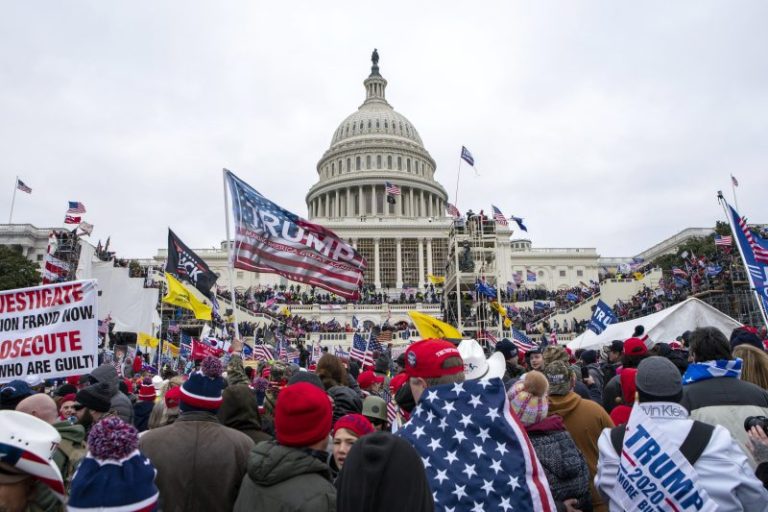A bipartisan bill that would make changes to how members of Congress could object to electoral will be included in the omnibus spending bill lawmakers need to approve in the coming days, Sen. Susan Collins (R-Maine) said Monday night.
The Electoral Count Reform and Presidential Transition Improvement Act, sponsored by Collins and Sen. Joe Manchin III (D-W.Va.), would amend the Electoral Count Act of 1887 and reaffirm that the vice president has only a ministerial role at the joint session of Congress where electoral college votes are counted. The measure would also raise the threshold necessary for members of Congress to object to a state’s electors.
Collins said that the she was “delighted” the electoral count reform bill would be included in the longer-term government spending bill, and that it was “very significant.”
The bill was driven by the Jan. 6, 2021, attack on the Capitol by a mob of President Donald Trump’s supporters seeking to stop the certification of Joe Biden’s win. Lawmakers have warned a similar effort to disrupt future electoral counts could happen without changes to the process.
Though the Senate has not yet voted on the bill, both Majority Leader Charles E. Schumer (D-N.Y.) and Minority Leader Mitch McConnell (R-Ky.) came out in support of the legislation in September.
“Our bipartisan bill is backed by election law experts and organizations across the ideological spectrum and a broad cross section of Senators from both parties,” Collins and Manchin said in a joint statement at the time. “We will keep working to increase support for our legislation that would correct the flaws in this archaic and ambiguous law.”
Around the same time, the House passed a similar bill that aimed to stop future presidents from trying to overturn election results through Congress, similarly citing the Jan. 6 insurrection.
After the 2020 election, Trump falsely told his supporters that Vice President Mike Pence had the power to reject electoral votes already certified by the states. Pence did not do so — and has repeatedly emphasized that the Constitution provides the vice president with no such authority. But on Jan. 6, 2021, many in the mob that overran the Capitol began chanting, “Hang Mike Pence!” on the mistaken belief that the vice president could have stopped Congress from accepting Biden’s victory.
Reps. Liz Cheney (R-Wyo.) and Zoe Lofgren (D-Calif.), who wrote the House’s version of the bill, argued that the risk of another effort to steal a presidential election remains high, as Trump continues to spread baseless claims of widespread election fraud, and as pro-Trump candidates in state and local elections around the country embrace those falsehoods.
The Senate and House bills differ chiefly in how much they would change the threshold necessary for members of both chambers to object to a state’s results. Currently, only one member each from the House and Senate are required to object to a state’s electors. The House bill would raise that threshold to at least one-third of the members of both the House and Senate, while the Senate version would raise that threshold to at least one-fifth of the members of both the House and Senate.
Unlike the Senate bill, the House bill — which passed in a 229-203 vote — saw little support from GOP lawmakers. Only nine Republicans joined Democrats in supporting the measure, and none of those nine will be members of Congress next year — either because they lost their primaries or chose to retire. Several of the Republicans who opposed the bill, including House Minority Leader Kevin McCarthy (Calif.), criticized it as unconstitutional.
McConnell has called the House bill a “non-starter” because of its lack of support from GOP lawmakers.
“It’s clear that only a bipartisan compromise originating in the Senate can actually become law,” he said in September. “One party going it alone would be a non-starter. In my view, the House bill is a non-starter. We have one shot to get this right.”

